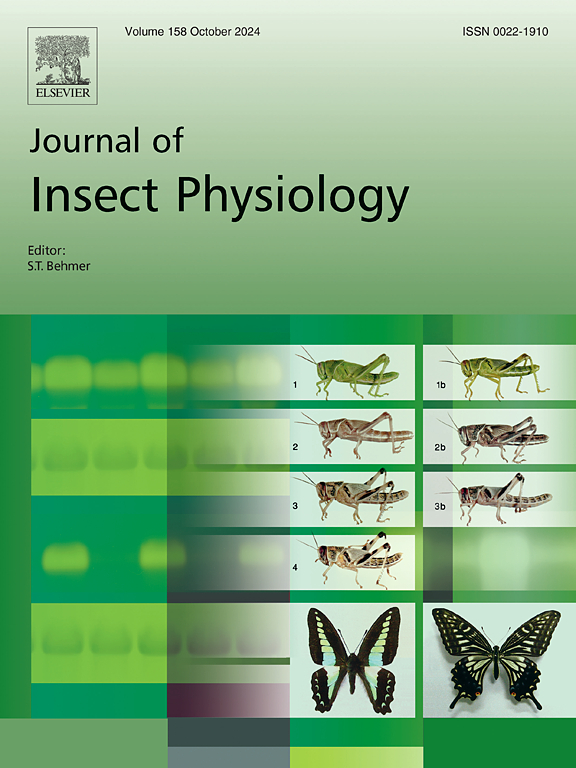Identification of available travel paths’ size and orientation by antennal mechanosensory system of crickets
IF 2.3
2区 农林科学
Q1 ENTOMOLOGY
引用次数: 0
Abstract
Insects use their antennae to explore surroundings and guide locomotion. Recently, we found that crickets modulate escape behavior elicited by airflow stimuli detected by another mechanosensory organ, called cerci, to avoid collision with obstacles detected with their antennae. This suggests the spatial perception ability of crickets through antennal mechano-sensing without visual inputs. However, whether they are able to identify travel paths available for their movements remains unknown. To assess this, we used the same experimental framework with wind stimulation as our previous studies and tested whether crickets could perceive the width or direction of an available escape path in surroundings using their antennae. When detecting a wall in front with gap openings of different widths, the crickets changed the movement direction of their escape responses depending on the gap width. If the gap was wider than their body width, the crickets ran forward, suggesting that they could recognize the space available for passage of their body width. In addition, the crickets adjusted their escape direction toward the wall gap when it was oriented at 30° to the side of their front. These results suggest that the crickets are able to perceive the spatial information of surroundings, such as size and orientation, available for upcoming movements via their antennal mechanosensory system.

蟋蟀触角机械感觉系统对可用行进路径大小和方向的识别
昆虫用触角探索周围环境并引导运动。最近,我们发现蟋蟀通过调节由另一种机械感觉器官(称为尾肌)检测到的气流刺激引起的逃跑行为,以避免与它们的触角检测到的障碍物相撞。这表明蟋蟀在没有视觉输入的情况下通过触角机械感应的空间感知能力。然而,它们是否能够识别出适合自己移动的路径仍然是未知的。为了评估这一点,我们使用了与之前研究相同的风刺激实验框架,并测试了蟋蟀是否可以使用它们的触角感知环境中可用逃生路径的宽度或方向。当发现前方有不同宽度的缝隙时,蟋蟀会根据缝隙的宽度改变逃跑反应的运动方向。如果缝隙比它们的身体宽度宽,蟋蟀就会向前跑,这表明它们可以识别出与它们身体宽度相同的空间。此外,当墙的缝隙与蟋蟀的前侧呈30°时,蟋蟀会将它们的逃跑方向调整到墙的缝隙上。这些结果表明,蟋蟀能够感知周围环境的空间信息,如大小和方向,这些信息可通过它们的触角机械感觉系统用于即将到来的运动。
本文章由计算机程序翻译,如有差异,请以英文原文为准。
求助全文
约1分钟内获得全文
求助全文
来源期刊

Journal of insect physiology
生物-昆虫学
CiteScore
4.50
自引率
4.50%
发文量
77
审稿时长
57 days
期刊介绍:
All aspects of insect physiology are published in this journal which will also accept papers on the physiology of other arthropods, if the referees consider the work to be of general interest. The coverage includes endocrinology (in relation to moulting, reproduction and metabolism), pheromones, neurobiology (cellular, integrative and developmental), physiological pharmacology, nutrition (food selection, digestion and absorption), homeostasis, excretion, reproduction and behaviour. Papers covering functional genomics and molecular approaches to physiological problems will also be included. Communications on structure and applied entomology can be published if the subject matter has an explicit bearing on the physiology of arthropods. Review articles and novel method papers are also welcomed.
 求助内容:
求助内容: 应助结果提醒方式:
应助结果提醒方式:


